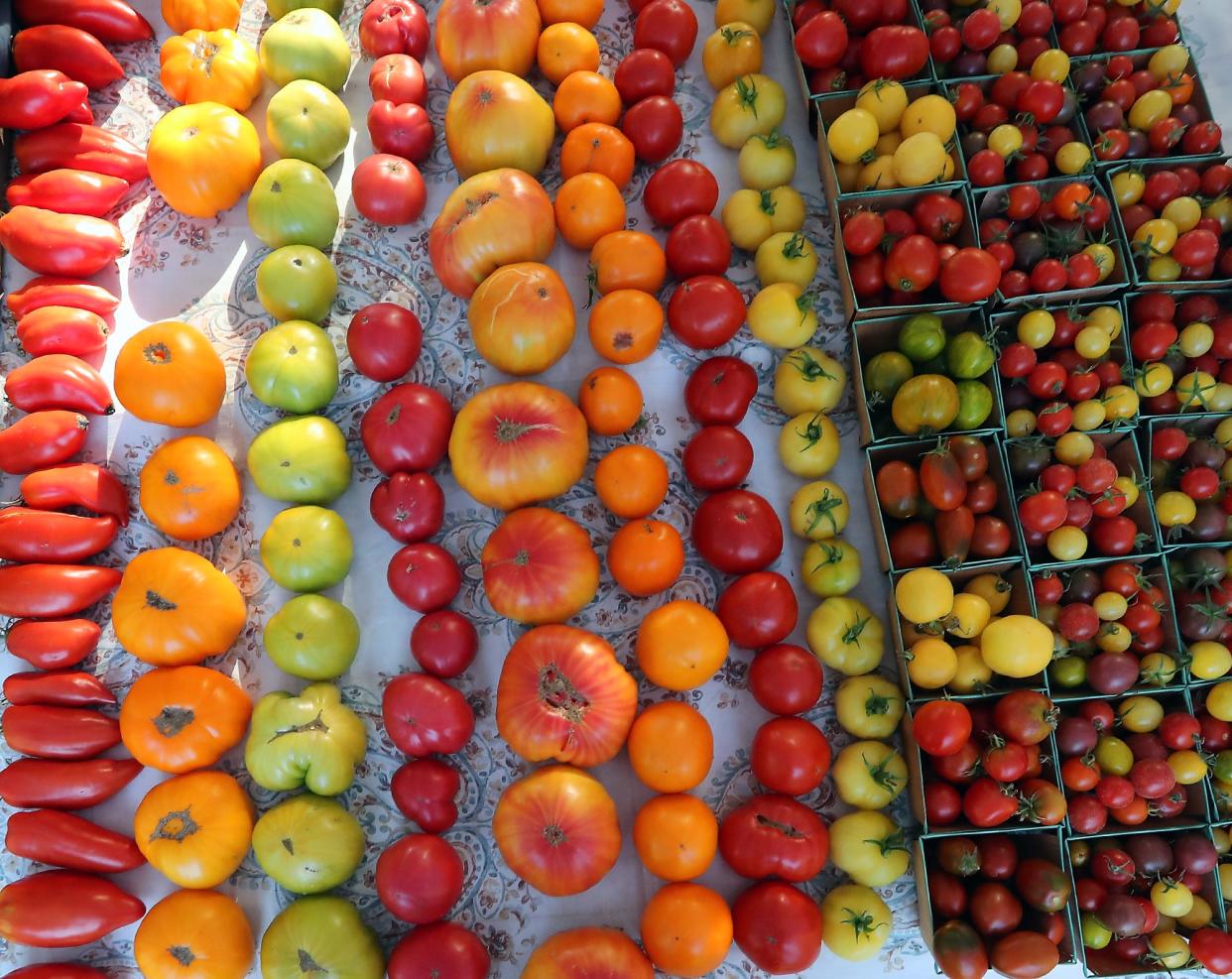As the Northwest summer warms up, here's a few tips for tomato care

After numerous dire predictions of a very hot, very dry summer for the PNW, our summer weather so far comes as a pleasant surprise. In fact, it’s been rather typical for midsummer, with the usual cool and cloudy mornings clearing off to warmer, sunnier afternoons. Though July has included a few hots days, updated predictions no longer show any heat dome events on our horizon, for which I am profoundly grateful. We may have the most benign climate on the planet these days!
While our tomatoes still aren’t super excited about chilly nights, thanks to local growers, they are better acclimated than in the past. In recent years, growers have been raising tomatoes and peppers with slightly cooler night temperatures than was traditional. As a result, heat loving plant starts are more resilient and less apt to sulk in our “normal” PNW summers. There’s also less chance that soaring heat will provoke tomatoes into shedding blossoms, as they tend to do when temperatures exceed 80 degrees. Also, bees don’t pollinate as much or as well in temps over 90 degrees, possibly because high heat events can damage or destroy pollen.
Those dire situations may not be issues this summer, but the "very dry" part of the predictions has been accurate, so careful watering is important. By now, plants are well established, so they can dry out a bit between waterings; let the top inch of soil get dry but don’t let plants droop. After watering, make sure the soil is damp at least 8-9 inches below the surface (as deep as most annual plant roots go). Small bubbler hose attachments can deliver a slow, steady supply of water better than an impatient human standing around with a hose is likely to do.
Midsummer fertilizing should be done after a deep watering, when soil and roots are evenly moist. For edibles, avoid high nitrogen fertilizers which promote leafy growth instead of flowers and fruit. For better results, use an organic fertilizer that offers less nitrogen and more phosphorus and potassium, such as a 8-10-10 veggie blend. To boost the best natural flavors in all fruits and vegetables, mulch generously with compost and water moderately (usually twice a week) once plants go into steady production mode. Both excess water and high nitrogen fertilizer will dilute flavors in edibles, from peas and carrots to raspberries and plums, so easy does it. As Italian gardeners know, the boldest flavors develop when tomatoes and peppers are grown on the dry side. By August, you can even let tomato foliage wilt a bit between waterings to encourage the later fruits to ripen fully.
When stems start breaking before tomatoes are ripe or when tomatoes taste dull rather than zippy, water-soluble fertilizers may be to blame. Container-grown tomatoes are especially prone to flat flavor because frequent watering dilutes and washes away soluble fertilizers so quickly. One great way to boost tomato flavor is to give each plant a quart of fresh sea water, one time only, when fruit set kicks in strongly. This adds natural salts as well as minerals that are lacking in potting soil mixtures, as does a sprinkling of kelp meal. Liquid seaweed extracts will also supply micronutrients and trace elements as well as plant hormones that encourage root growth, improve stem and foliage density, and increase chlorophyll production. End their meal with coffee grounds: a 1-2 inch mulch adds nitrogen and effectively fends off tomato blights (just remove the filters, please). Bon appetite!
Contact Ann Lovejoy at 413 Madrona Way NE, Bainbridge Island, WA 98110 or visit Ann’s blog at https://www.loghouseplants.com/blogs/greengardening/ and leave a question/comment.
This article originally appeared on Kitsap Sun: Tips for summer watering and fertilizing to keep tomatoes flavorful
